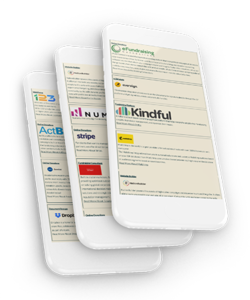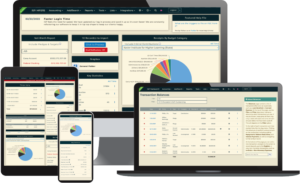The My Firm page provides an overall view of the Firm you work with in relation to the work done in ISP. These Firm settings will apply to and affect all accounts managed by the firm.
At the top of the page where the firm name is, you’ll see information for which Party the firm is with, as well as the different Copy from account options. To update this info, click the green triangle in the right corner and in the window that appears, make your changes.
NOTE: Any integrations with universal settings (like Xodo Sign) will automatically have those settings copied over to any new accounts if set here. This can save a lot of time with integrations that work across multiple accounts.
Only Firm Managers may make changes to firm settings.
Below the name and info area at the top are several sections.
Accounts: These are the various databases associated with the Firm. It will show you the Name of the database, the filing Agency, and if there is an amount due on the ISP invoice.
Tools: These Tools will automatically be added to any new account that gets created and associated with the Firm. To add to these, click the plus sign in the green triangle in the right corner. You can also remove options by clicking the red X to the left of each Tool.
Directory Listing: This section informs you of basic info regarding the Firm. It will tell you which Party it’s associated with, the various filing Agencies in the different accounts, if there’s a Firm logo, and more. To update this information, click the green triangle in the right corner of the section.
Users: Any users showing in this section will automatically be added as new users to any new accounts that get opened and associated with this account. You can add users to this option by clicking the plus sign in the green triangle in the right corner. To remove users, click the red X to the left of their name.
Imports: Along with the standard default imports that get added to any new database, you can choose to include other import formats when a new database is created and associated with the Firm. If you’d like to add a new format to this section, please contact Support.






